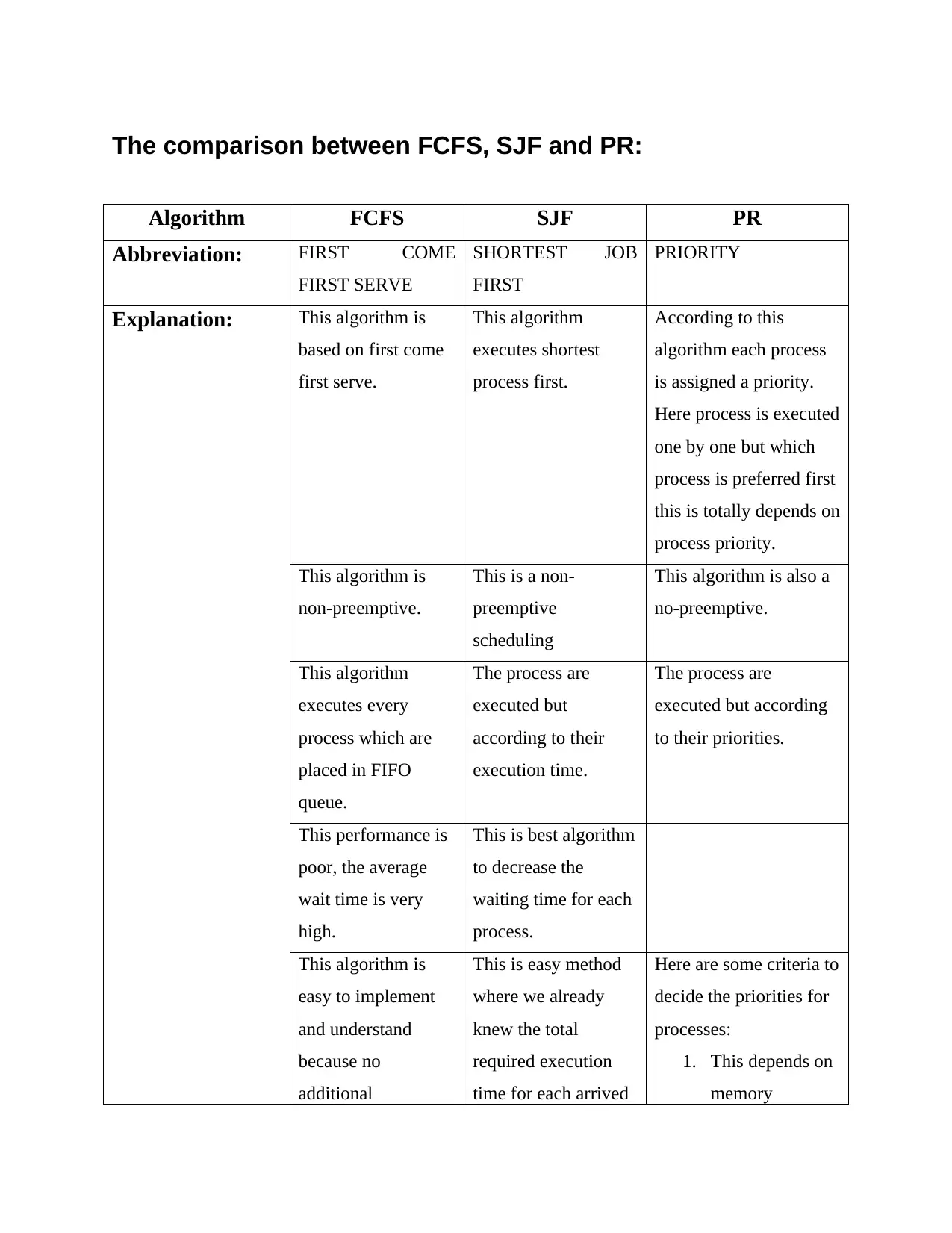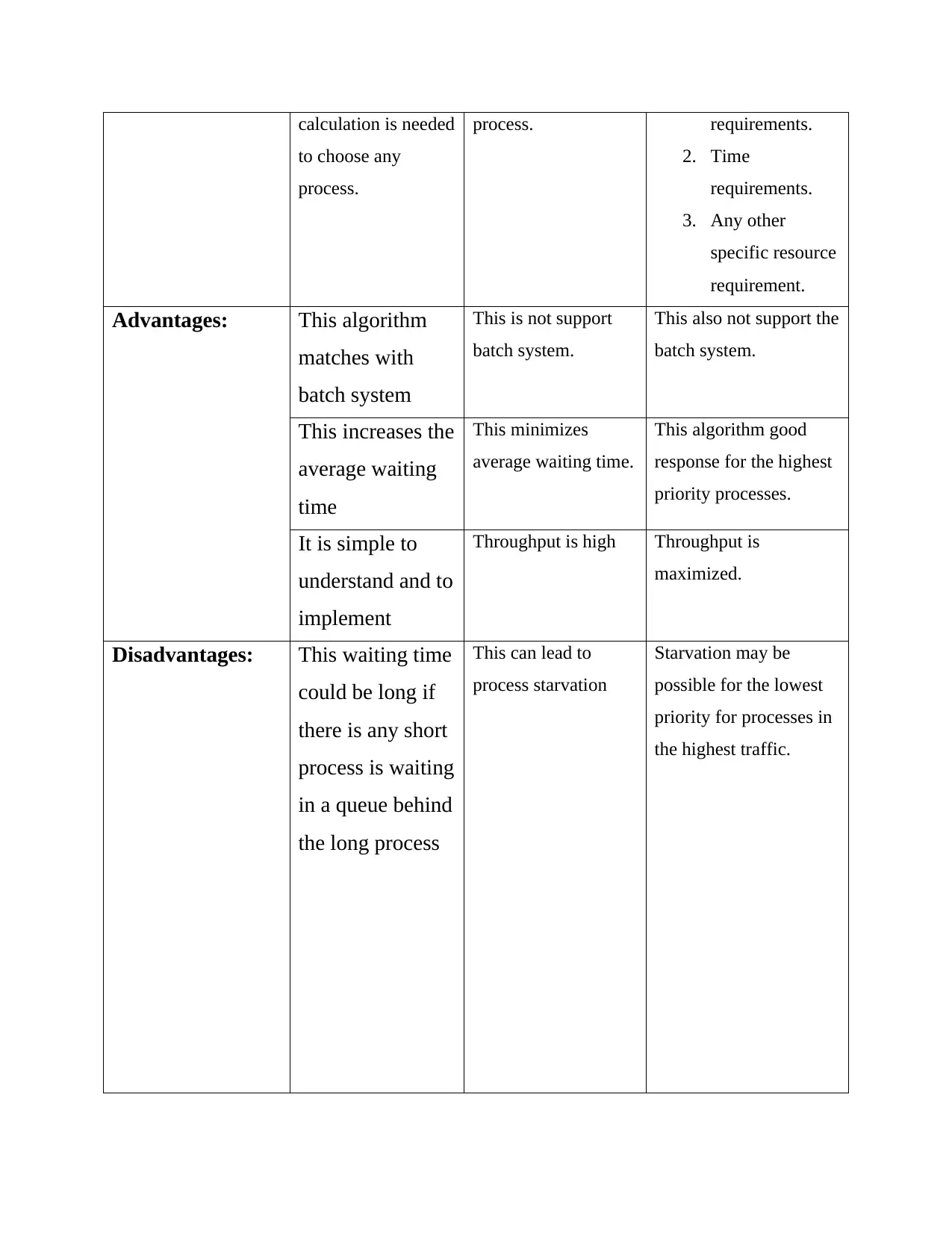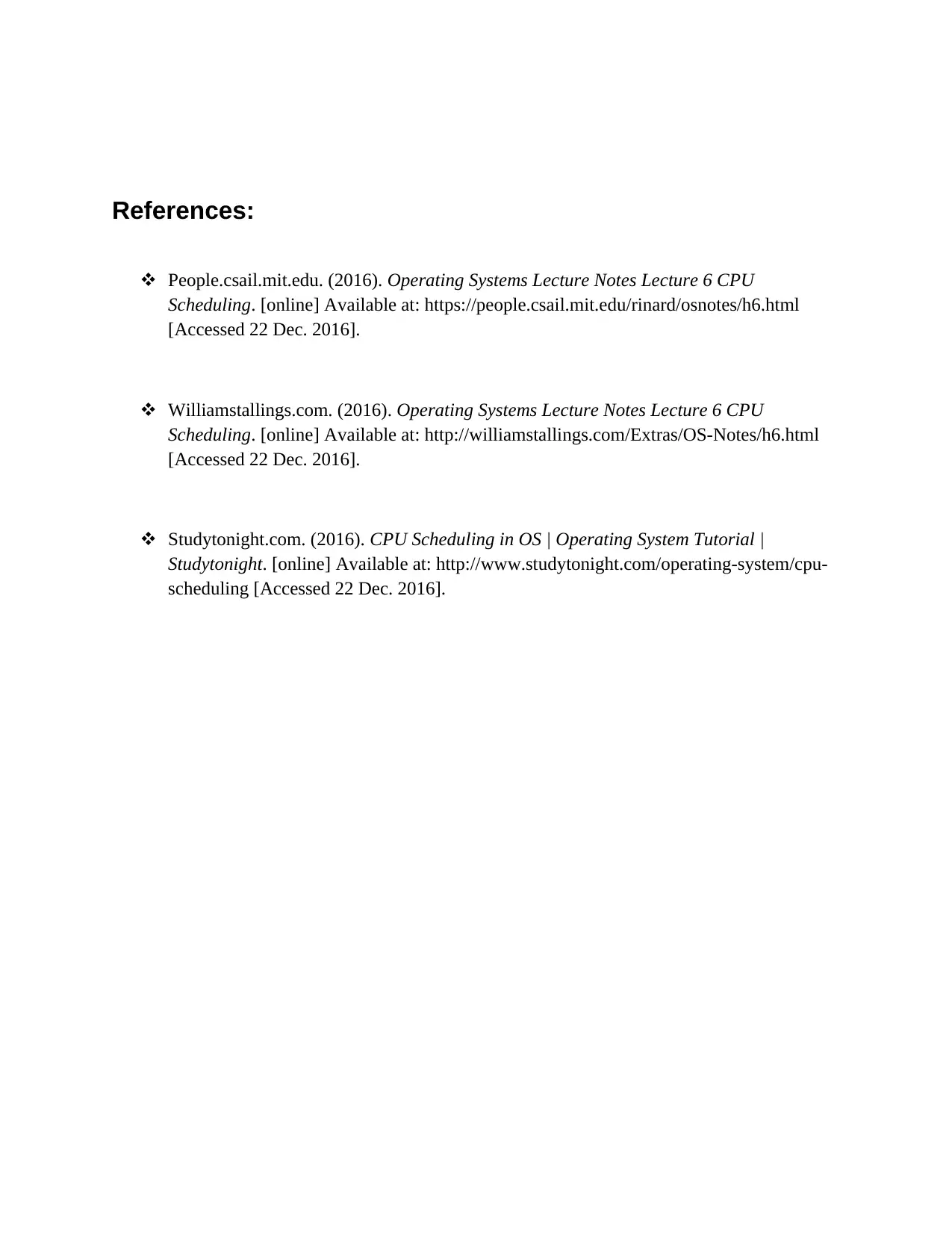Comparing FCFS, SJF and PR Algorithms
VerifiedAdded on 2019/09/20
|4
|440
|406
Report
AI Summary
The assignment content discusses the comparison between three CPU scheduling algorithms: FCFS (First Come First Serve), SJF (Shortest Job First), and PR (Priority). It explains each algorithm's working, advantages, and disadvantages. The FCFS algorithm executes processes in the order they arrive, while SJF prioritizes the shortest process first. PR assigns a priority to each process based on its execution time or memory requirements. The article concludes that while FCFS has poor performance with high average wait times, SJF and PR have better response times but may lead to starvation for lower-priority processes.
Contribute Materials
Your contribution can guide someone’s learning journey. Share your
documents today.
1 out of 4










![[object Object]](/_next/static/media/star-bottom.7253800d.svg)